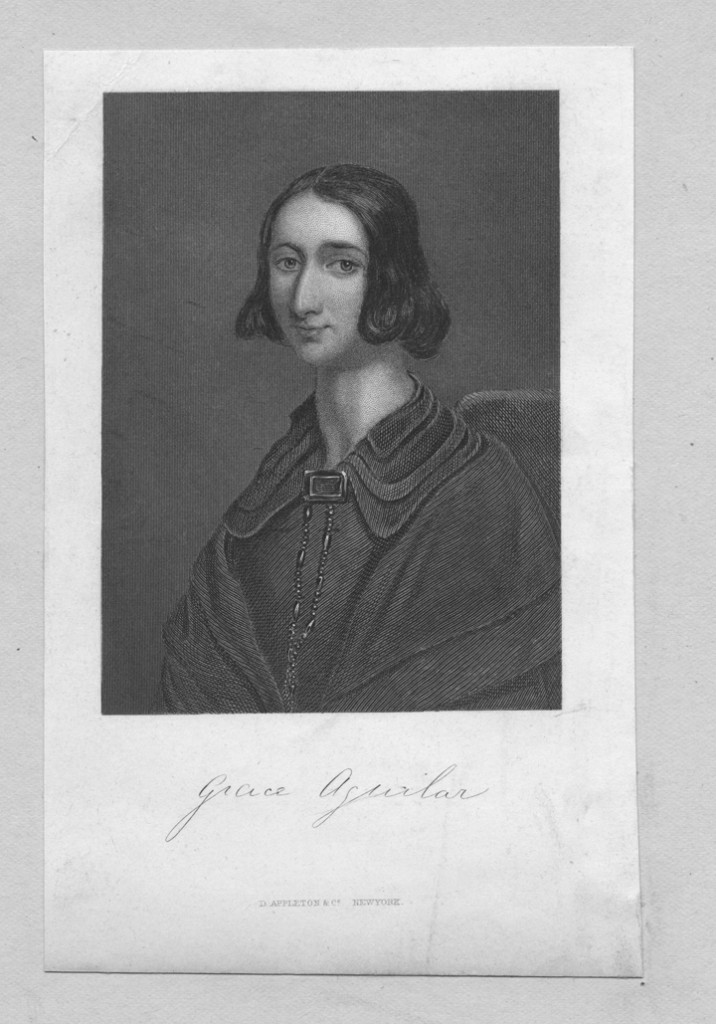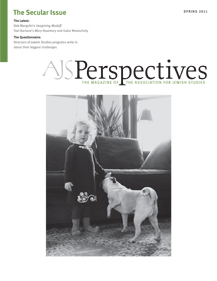
From the start, the Bible was a major focus of secularizing efforts and a site where their paradoxical character became quite apparent. Critical study of the text intended to liberate the original from unintelligible layers of tradition while creating new authorities and rules that would control the interpretation of the text. Translations aimed to make the Bible universally accessible also led to new divisions between experts and those who were expected to look for the experts' guidance. In Jewish contexts, too, we find vivid debates about the critical study of the Bible and its translation into the vernaculars but they unfold as extended commentaries on the implications of secularism rather than as secularizing trends in themselves. Here, I would like to reflect on the Bible as a "readable" text as published in 1842 by Grace Aguilar, Anglo- Jewish novelist and essayist, in her Spirit of Judaism. Her work was published by Isaac Leeser, a German-born community leader, scholar, Bible translator, and editor of The Occident in Philadelphia, who, in this case, was so worried by some of her remarks that he added annotations in which he expressed his strong reservations.
Aguilar's starting point is a fixture of maskilic discourse—the Bible is virtually unknown among Jews and needs to be made readable again:
We are in general perfectly satisfied with reading the Parasas and Haftorahs marked out as our Sabbath portions. The other parts of the Bible rest utterly unknown. Brought out on the Sabbath for the brief space of half an hour, the portions are read, and hastily dismissed, as a completed task, bringing with it no pleasure and little profit. Even this is but too often neglected, and we adhere to the forms and ceremonies of our ancestors, scarcely knowing wherefore; and we permit our Bibles to rest undisturbed on their shelves not even seeking them, to know the meaning of what we do. (51–52)
These remarks echo concerns that Moses Mendelssohn had expressed decades earlier in a casual but now quite famous remark about the necessity "to support the ceremonies with authentic, solid meaning, to make Scripture readable and understandable again" (Letter to Herz Homberg, September 22, 1783). The emphasis on the Bible as a legible, intelligible, accessible text raises several questions: What is a readable text? How does a text become readable? For whom does it become readable "again"?
Mendelssohn adopted the early modern model of the Miqra'ot gedolot with its translations and Hebrew commentaries, while he rejected the Zene rene, the early modern Yiddish paraphrase of the Pentateuch, which offered interwoven portions of Biblical texts and exegesis. As a result, his edition tended to exclude, rather than include, women, men, and children who were not fluent in Hebrew or modern German: they were cut off from Biblical texts and traditions they had enjoyed previously when studying the Zene rene.
In a radical departure from Mendelssohn's method and his silence about gender, age, and education, Aguilar demands that "the Jewish religion" should be studied "by its professors of every age and sex" and that "the Bible, not tradition" should be regarded as "its foundation and defence" (20–21). According to Aguilar, the Bible can be transformed into a text that will be accessible to all, if text and tradition are dissociated from each other, and if tradition is rejected. Isaac Leeser, quite predictably, finds Aguilar's proposal unacceptable. But the argument he offers in favor of "tradition" is remarkable: "It is useless to say, that the Scriptures speak for themselves; they assuredly do so to the person who has received instruction; but it requires no argument to prove that difference of education makes people take different views of the sacred Text" (21). Leeser highlights a concept that is familiar to us because of the work of Talal Asad and others who have drawn our attention to the "dispositions" that are created by families, communities, and institutions of learning: these communities introduce us to frameworks of thinking and acting that profoundly inform our attitudes, perspectives, and sensibilities. According to Leeser, reading is shaped by such dispositions. It is not an activity that unfolds in an unmediated way, governed solely by reason and text; on the contrary, it is always already mediated by institutions and traditions of "instruction," whether they are of Christian, Jewish, or, we might add, of secular origin.
It almost seems as if Aguilar had known Leeser's arguments and is responding to them when she indicates in a later chapter of her book that the existing frameworks of teaching and learning need to be reformed. The "Hebrew poor" should receive "instruction in their religion," the "trammels of tradition" and their "incomprehensible obscurity" should be ignored, and instead they should be taught "their English Bibles" (102). Here, we can clearly perceive Aguilar's educational agenda. She proposes a project of differentiation: those aspects of religion that can be illuminated by reason need to be distinguished from those that are unintelligible; and she promotes a project of dissemination: knowledge of the text should be made accessible to the entire "Hebrew nation," including women and "the poor." Both aspects—differentiation and dissemination of knowledge—are recognizable as universalizing movements. A third aspect is revealed when Aguilar emphasizes the intimacy of religious commitments: religion is a matter of the "inmost heart" (21), a private, not a public, affair.
Secularization has often been described as a movement of translation but here it is translation—the English Bible—that invites reflections on secularization. Aguilar is clearly attracted to Protestant, even evangelical, interpretations of religion, and this fascination with Protestantism turns into an acceptance of core elements of secularism: differentiation, dissemination, and internalization.
Leeser's response to Aguilar's irreverent remark about the "trammels of tradition" is sharp and passionate: "I am not permitted to alter the text so as to destroy the meaning; or else I should certainly have altered this sentence; for without claiming for tradition all that some assert for it, there is doubtlessly found laid down therein nearly the whole of our own manner of interpretation and mode of life. How else are we to read Scripture, unless it be in accordance with the views of our predecessors? What else forms the distinction between us and Christians?" (100). According to Leeser, the universalizing and secularizing tendencies in Aguilar's text blur the boundaries between Jewish and Christian commitments and open the door to the Christianization of Judaism and Jews.
And yet, Aguilar and Leeser eventually move toward each other. Leeser shows that the transformation of Scripture into a "readable" text does not depend on the rejection of tradition< but on "instruction" that will make Hebrew texts and traditions accessible to all: he supports Rebecca Gratz and the Hebrew Sunday schools, where girls and boys are introduced to the Hebrew language. At the same time, Aguilar acknowledges the role of the Hebrew sources when she reflects on the meanings of the Shma' by referring to the words and letters of the Hebrew text. What is more, in her Women of Israel and her History of the Jews of England, she sets out to establish alternative traditions that can explicate and illuminate the Biblical concept of a "Hebrew nation." These movements toward each other signal the authors' shared resistance to the slippages between Protestantism and secularism: the Bible is reclaimed as the source of Jewish religious as well as national self-assertion.
Spirit of Judaism presents contrasting voices; inscribes gender and class into debates on the accessibility of Scripture; and attests to early concerns about the uncanny proximity of universalizing, secularizing, and Christianizing trends. Perhaps the preservation and publication of an ongoing argument leave the deepest impression: as long as Aguilar and Leeser continue to argue about these trends, they haven't accepted them just yet.

